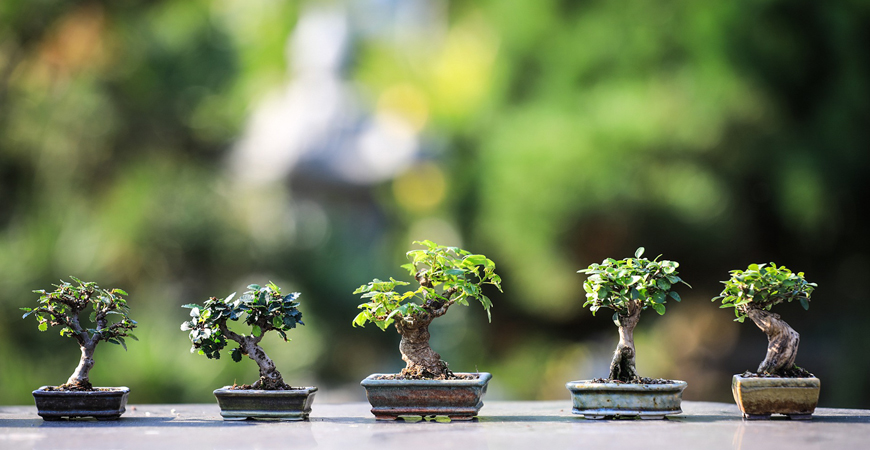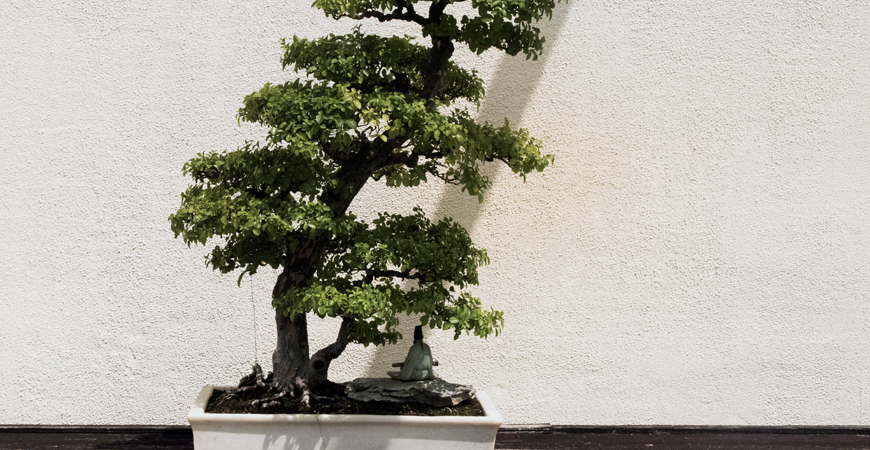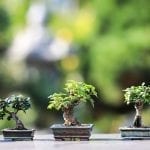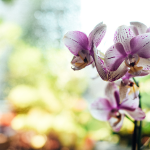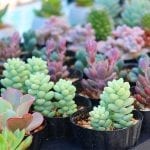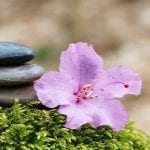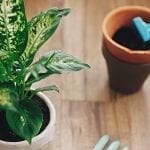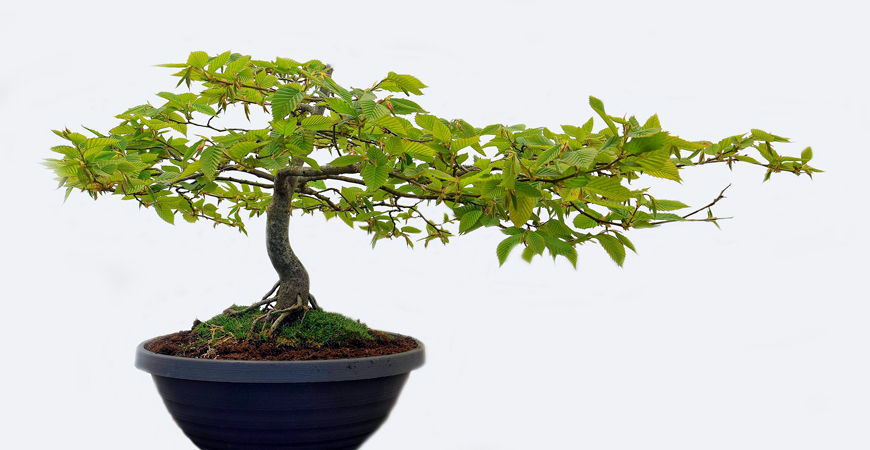
Bonsai Tree Care for Beginners
Bonsai is the practice of caring for and pruning miniature trees and shrubs grown in pots. It is an ancient practice often performed to reduce stress and display the owner’s gardening talents. Have questions about bonsai tree care? Read on for our beginner bonsai tips and how-tos.
Which species of bonsai trees are best for growing indoors?
The following bonsai tree species will grow well indoors or outdoors in moderate temperatures (above 50°F). Also, they are easy to care for and perfect for beginners.
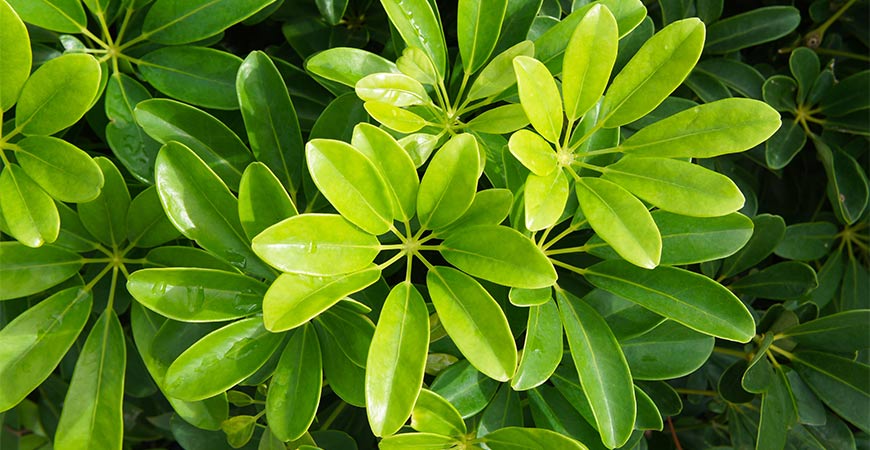
Hawaiian umbrella (arboricola schefflera ‘luseane’)
The Hawaiian umbrella tree is one of the best and easiest bonsai trees to grow and features tiny umbrella-shaped leaves that form a thick canopy. This bonsai plant does well in both low-light and sunny locations.

Jade (Portulacaria Afra)
A succulent bonsai native to South Africa has pale green leaves. Not only are they easy to care for, but this species can also be cultivated easily.
Jade trees symbolize renewal and growth. Another name for the jade tree is “elephant bush.”
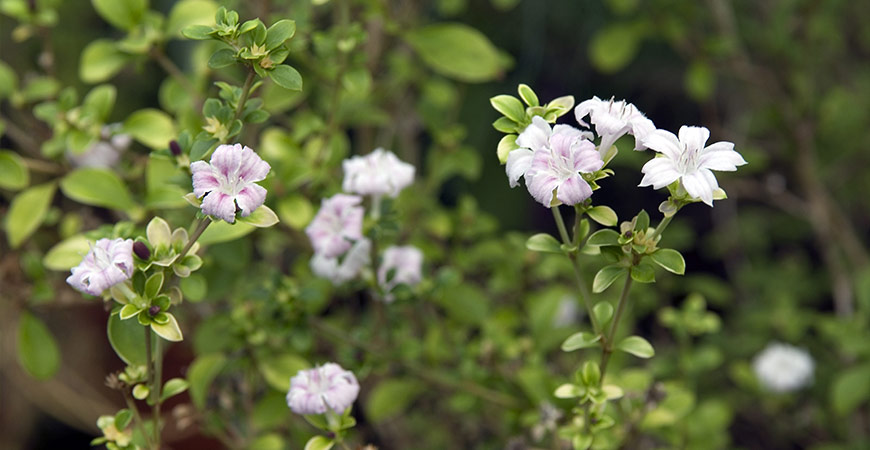
Mount fuji serissa (serissa foetida)
A sub-tropical evergreen, mount fuji serissa blooms in delicate, white, star-shaped flowers. They are often imported from Japan.
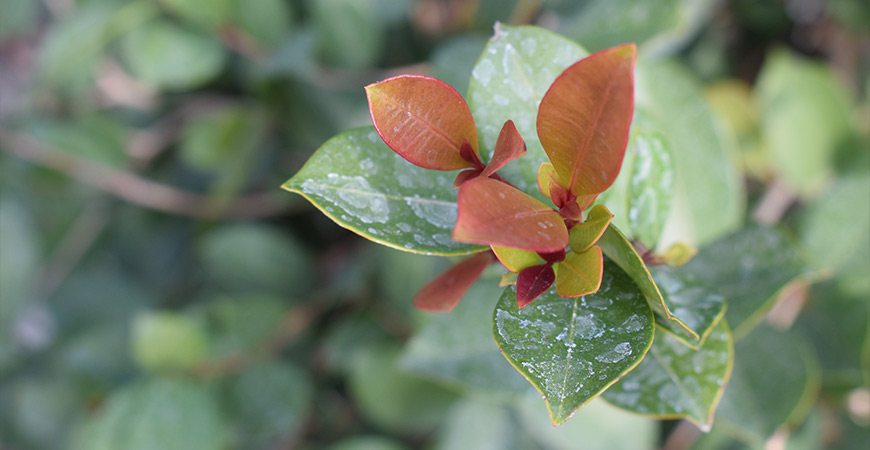
Brush cherry (eugenia myrtifolia)
Brush cherry has small, glossy evergreen leaves and blooms in small white flowers. The foliage develops attractive red highlights if placed in a sunny spot.
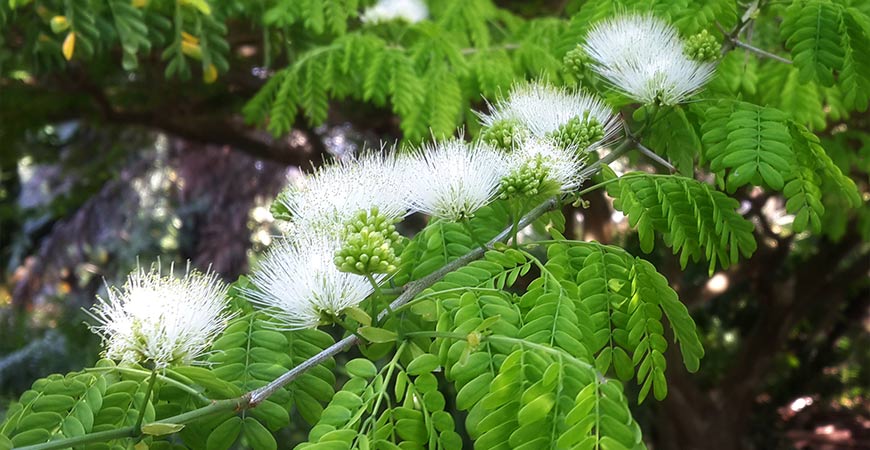
Brazilian raintree (pithecellobium tortum)
A hardwood tree is native to the rainforests of Brazil. Brazilian raintree features delicate branches and light green foliage.
The leaves fold up in the evening or the shade and wake up in the morning. Moreover, it blooms in puffy white flowers.
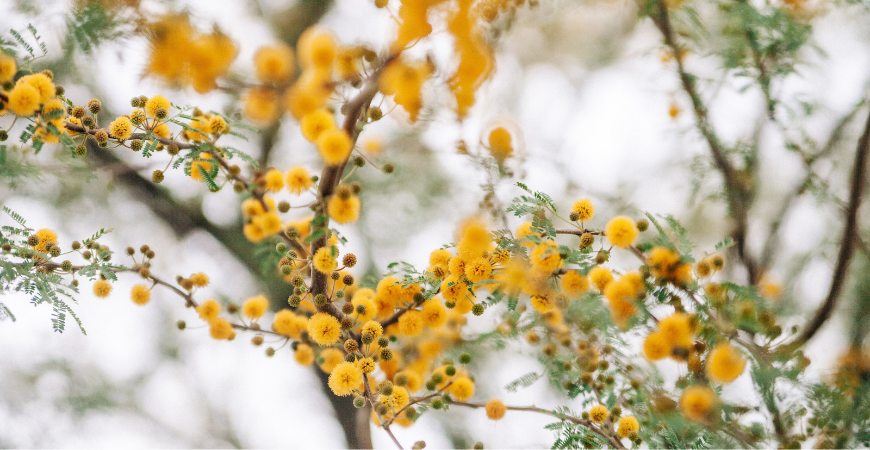
Dwarf sweet acacia (acacia farnesiana)
The foliage of dwarf sweet acacia is feathery and blue-green in hue. Moreover, the thorny stems are usually an attractive chocolate brown or grey hue.
This plant produces blooms in fragrant, yellow flowers that appear in full clusters.
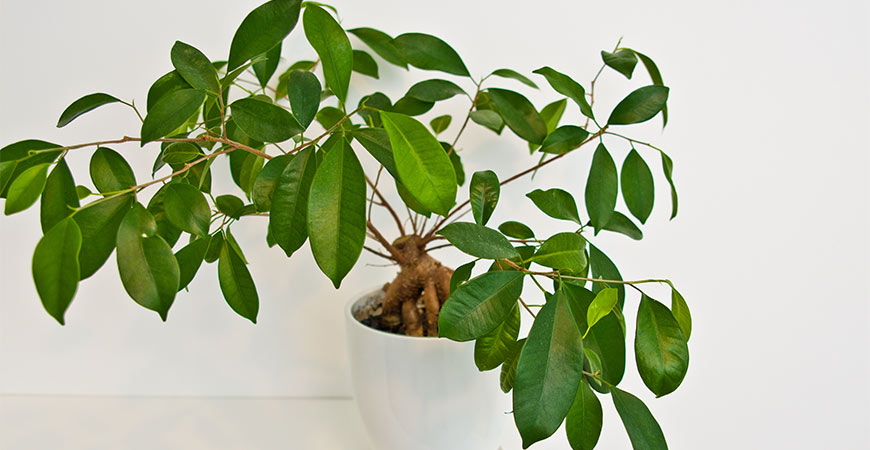
Willow leaf ficus (ficus nerifolia/salicifolia)
The willow leaf ficus features long light green leaves similar to a weeping willow tree. This bonsai is also known as ‘mexicana ficus.’
How much light do bonsai trees require?
Most trees are grown indoors or outside in direct sunlight. Place your plant in a window that receives full sun or indirect sun.
Position the tree a maximum of 12 inches from the window glass – closer is better. A window that faces south, east, or west is best.
If you have minimum indoor light, then consider purchasing a grow light. Place the lamp 2 inches or more above the tree foliage.
Grow lights provide the correct spectrum of light needed for your plant to grow and thrive.
How often should I water my bonsai tree?
Bonsai trees grow in a small amount of well-draining soil, requiring frequent watering. As a rule, most indoor trees require moisture every other day. Purchase a moisture meter to make watering easier. Insert the meter into the soil, so you’ll know when it’s time to add water.
Other factors include:
- Where the tree is situated
- The room temperature
- How much light the plant receives
- The type of soil
- And the time of year (seasons)
Test the soil for dryness with a finger or lift the pot to check its current weight. If the pot feels too light, then it may need watering.
Does a bonsai tree require humidity?
Most trees require more humidity than is provided indoors. Increase humidity around the tree by placing the container on a pebble tray filled with water. As the water evaporates, it will add humidity to the air surrounding your bonsai tree. If you have extremely dry air, be sure to mist the foliage routinely.
What type of potting soil should I use?
Most available potting soils are too heavy for bonsai use, so it’s best to purchase potting soil made for bonsai. Bonsai soil drains well while retaining some moisture.
And the soil ingredients help to prevent compaction and ‘wet feet.’
The two main types of bonsai soil are:
- Conifer mix – made for evergreen and deciduous bonsai trees
- Tropical mix – for bonsai tree species native to tropical regions
How often should I fertilize my bonsai tree?
Because bonsai trees grow in a small amount of soil, feeding your tree is necessary. So be sure to feed your tree, especially in the spring and fall.
To elaborate, the fertilizer you apply should contain nitrogen, potash, and phosphoric acid.
When should I repot my bonsai tree?
Like most potted plants, a bonsai tree will eventually outgrow its container. Repot your tree every one to five years, depending on the tree species.
If your tree develops pale yellow leaves, it can mean that it is time to repot.
Here’s how to repot your bonsai tree:
- Remove the tree from the container and inspect the root system. If the roots are beginning to form a ball or grow around the pot’s perimeter, then it’s time to trim the roots and move the tree to a slightly larger container.
- Trim the roots. Remove no more than 20% of the root system.
- Place the tree in the new container using fresh, dry soil. Prevent air pockets by working it around the roots.
- Water well.
Is it necessary to trim and prune a bonsai tree?
Home repair expert, Bob Vila, says, “Without pruning, a bonsai grows into a regular tree—but avoid the novice mistake of over-pruning. Only prune as new growth matures, not every time a new leaf appears. Follow the plant’s natural inclination, pruning only to keep growth in balance.”
The practice of pruning, trimming, and shaping a bonsai tree creates an attractive uniform look and balances foliage growth and root growth for a healthy tree. Shaping should start when the tree is very young and continue as it matures.
Bonsai pruning requires a pair of butterfly or bonsai shears. Remove foliage and light branches with bonsai shears. Then prune heavier branches with a concave branch cutter.
Furthermore, a concave branch cutter removes small to large bonsai branches without scarring.
Did you know? Bonsai is believed to have originated in 800 AD as a favorite meditative pastime of Buddhist monks.

